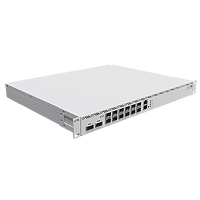uberwebguru
Explorer
- Joined
- Jul 23, 2013
- Messages
- 97
I am trying to get rid of having to get a server for pfsense and also get a 10G switch, making it 2 things to worry about
So why not get one giant mikrotik core router and connect my servers to it directly?
I only have like 8 servers to connect to with dual 10 SFP+ ports each
Here is the mikrotik router am thinking about CCR2216-1G-12XS-2XQ

 mikrotik.com
mikrotik.com
Please advice on if this is a good plan or what issues i will have going this route

 www.youtube.com
www.youtube.com
So why not get one giant mikrotik core router and connect my servers to it directly?
I only have like 8 servers to connect to with dual 10 SFP+ ports each
Here is the mikrotik router am thinking about CCR2216-1G-12XS-2XQ

CCR2216-1G-12XS-2XQ | MikroTik
The new MikroTik flagship with the power of a whole fleet. Unleash the power of 100 Gigabit networking with L3 Hardware Offloading! This router can be a handy drop-in upgrade for existing CCR1072 setups.
Please advice on if this is a good plan or what issues i will have going this route

MikroTik product news: CCR2216-1G-12XS-2XQ
The new MikroTik flagship with the power of a whole fleet. Unleash the power of 100 Gigabit networking with L3 Hardware Offloading! This router can be a hand...

